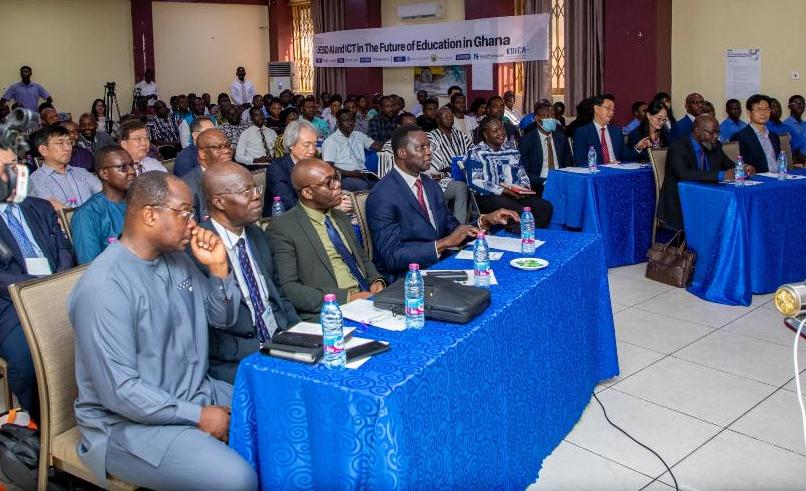
From their earliest years, the brothers Wilbur Wright (1867-1912) and Orville Wright (1871-1948) displayed a rather unusual interest in the working parts of any kind of device, particularly the elaborate toys their father often brought home to them from his travels as a bishop in the United Brethren Church.
They would take these toys apart in a state of extreme excitement, avid to figure out what made them tick. Then they would reassemble them, always with some modification.
Although the boys were reasonably good at schoolwork, neither of them received a high school diploma. They wanted to live in a world of machines, and the only knowledge that really interested them was that which related to the design and construction of some new device. They were extremely practical.
In 1888 their father needed to quickly print out a pamphlet for his work. To help him, the brothers cobbled together their own small job press, using the hinge from a folding buggy top in the backyard, rusty springs, and other pieces of scrap.
The press worked brilliantly. Inspired by their success, they improved the design, using better parts, and opened their own printing shop. Those who knew the business marveled at the peculiar press the brothers had concocted, which managed to spit out 1,000 pages per hour, double the usual rate.
The brothers, however, had a restless spirit. They needed constant challenges, and in 1892 Orville discovered the perfect new outlet for them. With the invention of the safety bicycle (the first bicycle featuring two wheels of the same size), America had become seized with a biking craze.
The brothers purchased their own bicycles, entered races, and became fanatics in the sport. Soon they were taking their bicycles apart and making minor adjustments. Seeing them at work in the backyard, friends and acquaintances would bring them their own bicycles for repairs.
Within months they knew bicycle technology from the inside out, and decided to open their own shop in their native Dayton, Ohio, where they sold, repaired and even modified the latest models.
This seemed to be the perfect match for their skills. They could make various changes on a bicycle, take it out for a test ride, feel what worked and didn’t work, and then make further improvements.
They were constantly striving to make the bicycles more maneuverable and aerodynamic, changes that would qualitatively alter the experience of riding and give the rider a feeling of being in complete control. Dissatisfied with the latest designs, they decided that the next logical step was to build their own aluminum frames and design their own custom-built bicycle. This represented a steep challenge and it would require months of on-the-job learning to be able to properly build frames.
The slightest flaw could cause all kinds of horrifying accidents. In the process of learning this skill, they purchased a slew of the latest tools, built their own one-cylinder engine to power them, and steadily became master bicycle craftsmen. Those who rode the Wright brothers’ bicycles could feel right away the superiority of their version, which included technological improvements that would soon become industry standards.
In 1896, while convalescing from an injury, Wilbur read an article that would haunt him for years. It concerned the death of Otto Lilienthal, the leading designer of gliders and an expert in the growing field of aviation. He had died in a crash with his latest glider design.
The photographs of the various gliders he had built, all in flight, astounded Wilbur – they looked like the wings of a giant prehistoric bird. As someone with a powerful sense of visualization, Wilbur could imagine the sensation of flying itself, and it thrilled him.
But what surprised him in the article was that over many years of test flights, perhaps numbering in the hundreds, Lilienthal had never been able to maintain the flight long enough to get a feel for the necessary improvements, and had probably died because of this.
Several years later, newspapers were filled with stories about the latest pioneers in aviation, many of whom appeared to be getting closer to the goal of creating a motored flying machine. It was now turning into a race to be the first to succeed. His curiosity on the subject getting deeper, Wilbur decided to write to the Smithsonian Institution in Washington, D.C., requesting all of their available information on aeronautics and flying machines.
For the next few months he pored over the materials, reading about the physics and mathematics behind flight, the designs of Leonardo da Vinci, and the gliders of the nineteenth century. He added to his reading list books about birds, which he now began to observe and study. And the more he read, the more he had the strange sensation that he and his brother could actually be the ones to win such a race.
At first glance this would seem an absurd idea. The men in the field were all experts with incredible technical knowledge, some with impressive college degrees. They had an enormous head start over the Wright brothers. Designing and building a flying machine was an expensive venture that could total thousands of dollars and lead to yet another crash.
The favorite to win the race was Samuel Langley, the secretary of the Smithsonian Institution, who had an enormous government grant to pursue his work and had already successfully flown a steam-powered, unmanned model. The brothers came from a modest background, and the only money they had was the slender profits from their bicycle shop. But what all of these men lacked, in Wilbur’s mind, was some basic common sense when it came to any kind of machine.
These aviators had begun with the premise that what mattered was to get the machine in the air using a powerful engine of some sort, figuring the rest out once flight had been achieved. Getting in the air would impress the public, gain attention, and attract financial backing. This led to many crashes, constant redesigns, the search for the perfect engine, new materials, and more crashes. They were getting nowhere, and the reason was simple.
As Wilbur knew, the key to building anything right is repetition. It was only by getting their hands on bicycles, fiddling and tinkering with them, then riding them and gaining a feel for what worked, that the brothers had been able to design a superior variety of bicycle. Because the designers of the flying machines could not fly for more than a minute, they were locked into a vicious cycle –they were never airborne long enough to learn how to fly and properly test out their designs, or get a feel for what might work. They were doomed to failure.
Wilbur discovered another great flaw in their thinking that shocked him: they all overvalued the importance of stability. They thought in terms of a ship floating through the air. A ship is designed to maintain balance, and to move in as stable and straight a manner as possible; tipping from side to side is far too dangerous. Based on this analogy, they decided to design the wings of their flying machines in a slight V shape, to compensate for any sudden gusts of wind and to keep the cruising aircraft in a straight line. But Wilbur felt that thinking in terms of ships was the wrong analogy. Instead, it was far wiser to think in terms of a bicycle.
A bicycle is inherently unstable. It is the rider who learns quickly enough how to keep the bike in a secure position, and to steer it properly by leaning to the side. A pilot of a flying machine, as he imagined it, should be able to safely bank and turn, or tilt up or down, and not be locked into a rigid horizontal line, like a ship. Trying to free the machine from the effects of the wind was actually quite dangerous, because it would remove the ability of the pilot to adjust.
Armed with this knowledge, it was easy enough for Wilbur to convince his brother that a flying machine should be their next and ultimate challenge. They would have to use their limited profits from the bicycle shop to fund the project. This would force them to be creative, using scrap parts and never trying anything beyond their means.
Instead of beginning with a grandiose device to test out their ideas, they would have to slowly evolve the perfect design, just as they had done with the printing press and the bicycle.
They decided to begin as modestly as possible. They designed various kites to help them determine the perfect overall shape for a test glider. Then, based on what they had learned, they fashioned the glider itself. They wanted to teach themselves how to fly.
The usual method of launching a glider off the crest of a hill was too dangerous. Instead, they decided to move operations to Kitty Hawk, North Carolina, the site of the strongest winds in the United States. There, on the sand dunes of the beaches at Kitty Hawk, they could get airborne from small elevations, fly close to the ground, and land in a soft bed of sand.
In the year 1900 alone, they were able to perform more test flights than Lilienthal had attempted over many years. They slowly perfected the design, and improved the materials and configuration-for instance, they learned to make the wings longer and thinner to improve the lift. By 1903 they had a glider they could fly for considerable distances, with remarkable control over turning and banking. It was indeed like a flying bicycle.
Now it was time to take the final step–adding the engine and propellers to their design. As before, they looked at the designs of their rivals and noticed another weakness: they had modeled their propellers on those of boats, once again opting for stability.
Based on their own research, the brothers decided that the blades should be cambered, like the wings of a bird – that would give the plane more thrust. Looking to purchase the lightest engine to power the machine, they found it was far beyond their budget. So, with the power help of a mechanic in their shop, they built their own engine. In total, the cost of their flying apparatus would come in under $1,000-considerably less than any of the designs of their competitors.
On December 17, 1903, Wilbur piloted their flying machine at Kitty Hawk for an impressive fifty-nine seconds–the first manned, controlled, and powered flight in history. Over the years they would improve the design, and the flight times would increase. For the other competitors in the race it was a complete mystery how two men without any engineering or aeronautic experience or financial backing had managed to get there first.
Essential lessons from the pursuit of the Wright Brothers
The development of the airplane represents one of the greatest technological achievements in our history, with profound ramifications for the future. There simply was no real precedent or model to base the flying machine on.
It was a genuine puzzle, and it required the highest degree of ingenuity to solve it. In the history of its invention, we can observe two radically different approaches. On the one side was a large group of engineers and designers with backgrounds in the sciences who saw the problem in abstract terms: how to get the plane launched and propelled, how to overcome wind resistance, and so on.
They focused largely on the technology and worked to create the most efficient parts –the most powerful engines, the best-designed wings, all of this based on elaborate lab research. Money was no object. This process depended on specialization – individuals who focused on different parts and who specialized in different materials. In many cases, the designer would not end up being the pilot; someone else would do the test flights.
On the other side were two men from a completely different background. For them, the pleasure and excitement of design was in doing everything themselves. They designed the machine, built it, and flew it.
Their model depended not on superior technology, but on the highest number of test runs, creating an optimal learning curve. This revealed flaws to be worked on and gave them a feel for the product that could never be had in the abstract. The emphasis was not on the parts, but on the overall flying experience; not on power, but on control. Since money was a factor, supreme importance was placed on ingenuity in getting the most out of the least.
The differences between the two approaches can be seen in the analogies they chose to base their designs on. The abstract thinkers opted for the ship analogy, working on the similarity of navigating an alien medium (water or air), which made them place importance on stability.
The Wright brothers chose the bicycle, which emphasized the rider or pilot, the user-friendliness of the machine, and its overall functionality. Focusing on the pilot instead of the medium ended up being the right answer to the puzzle, because it led to the design of something that could be maneuvered. From that starting point, a more complex airplane could be easily evolved.
The principle behind mechanical intelligence can be summarized as follows: whatever one may be creating or designing, they must test and use it themselves. Separating out the work will make one lose touch with its functionality. Through intense labor on your part, you gain a feel for what you are creating.
In doing this work, you see and feel the flaws in the design. You do not look at the parts separately but at how they interact, experiencing what you produce as a whole. What you are trying to create will not magically take off after a few creative bursts of inspiration, but must be slowly evolved through a step-by-step process as you correct the flaws.
In the end, you win through superior craftsmanship, not marketing. This craftsmanship involves creating something with an elegant, simple structure, getting the most out of your materials – a high form of creativity.
These principles work with the natural bent of our brain, and are to be violated at our own peril.
Credit: Mastery by Robert Greene.
Reproduced by Elijah Otoo – Essien
Assistant Superintendent of Immigration
Email: [email protected]
Tel: 233 240080104)
The post Mechanical intelligence appeared first on The Business & Financial Times.
Read Full Story













Facebook
Twitter
Pinterest
Instagram
Google+
YouTube
LinkedIn
RSS